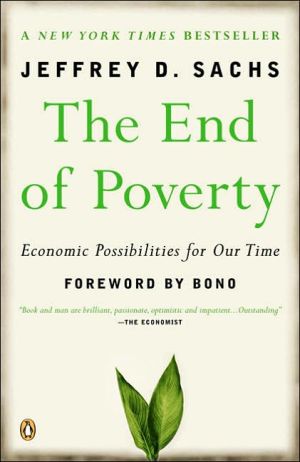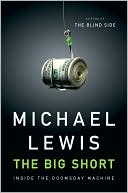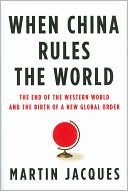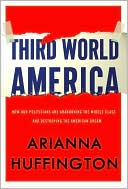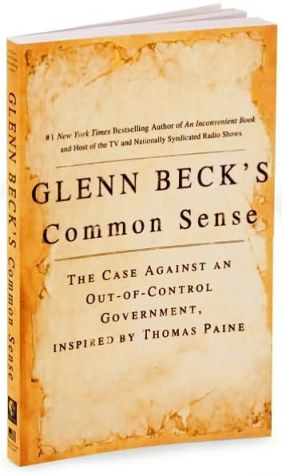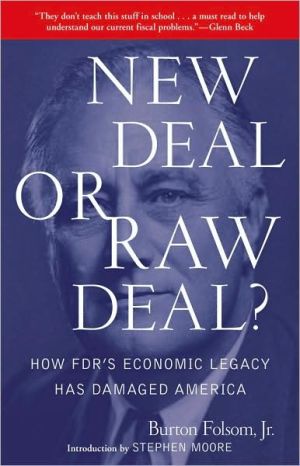The End of Poverty: Economic Possibilities for Our Time
Jeffrey D. Sachs has been cited by The New York Times Magazine as “probably the most important economist in the world” and by Time as “the world’s best-known economist.” He has advised an extraordinary range of world leaders and international institutions on the full range of issues related to creating economic success and reducing the world’s poverty and misery. Now, at last, he draws on his entire twenty-five-year body of experience to offer a thrilling and inspiring big-picture vision of...
Search in google:
A landmark exploration of the way out of extreme poverty for the world's poorest citizens Among the most eagerly anticipated books of any year, this landmark exploration of prosperity and poverty distills the life work of an economist Time calls one of the world's 100 most influential people. Sachs's aim is nothing less than to deliver a big picture of how societies emerge from poverty. To do so he takes readers in his footsteps, explaining his work in Bolivia, Russia, India, China, and Africa, while offering an integrated set of solutions for the interwoven economic, political, environmental, and social problems that challenge the poorest countries. Marrying passionate storytelling with rigorous analysis and a vision as pragmatic as it is fiercely moral, The End of Poverty is a truly indispensable work. The New Republic - Leon Wieseltier This is a serious book by a serious man.... He is especially stirring about the desperation of Africa.
The path from poverty to development has come incredibly fast in the span of human history. Two hundred years ago, the idea that we could potentially achieve the end of poverty would have been unimaginable. Just about everybody was poor with the exception of a very small minority of royals and landed gentry. Life was as difficult in much of Europe as it was in India or China. With very few exceptions, your great-great-grandparents were poor and most likely living on the farm. One leading economic historian, Angus Maddison, puts the average income per person in Western Europe in 1820 at around 90 percent of the average income of sub-Saharan Africa today. Life expectancy in Western Europe and Japan as of 1800 was probably about forty years.\ There was little sense a few centuries ago of vast divides in wealth and poverty around the world. China, India, Europe, and Japan all had similar income levels at the time of European discoveries of the sea routes to Asia, Africa, and the Americas. Marco Polo, of course, marveled at the sumptuous wonders of China, not at its poverty. Cortés and his conquistadores expressed astonishment at the riches of Tenochtitlán, the capital of the Aztecs. The early Portuguese explorers in Africa were impressed with the well-ordered towns in West Africa.\ Until the mid-1700s, the world was remarkably poor by any of today’s standards. Life expectancy was extremely low; children died in vast numbers in the now rich countries as well as the poor countries. Disease and epidemics, not just the black death of Europe, but many waves of disease, from smallpox and measles to other epidemics, regularly washed through society and killed mass numbers of people. Episodes of hunger and extreme weather and climate fluctuations sent societies crashing. The rise and fall of the Roman Empire, for Arnold Toynbee, was much like the rise and decline of all other civilizations before and since. Economic history had long been one of ups and downs, growth followed by decline, rather than sustained economic progress.\ The Novelty of Modern Economic Growth\ If we are to understand why vast gaps between rich and poor exist today, we need therefore to understand a very recent period of human history during which these vast gaps opened. The past two centuries, since around 1800, constitute a unique era in economic history, a period that the great economic historian Simon Kuznets famously termed the period of Modern Economic Growth, or MEG for short. Before the era of MEG, indeed for thousands of years, there had been virtually no sustained economic growth in the world and only gradual increases in the human population…;
\ "Jeffrey Sachs is that rare phenomenon: an academic economist famous for his theories about why some countries are poor and others rich, and also famous for his successful practical work in helping poor countries become richer. In this long awaited, fascinating, clearly and movingly written book, he distills his experience to propose answers to the hard choices now facing the world." ?Jared Diamond, Pulitzer Prize winning author of Guns, Germs and Steel and Collapse\ \ He has been cited by The New York Times Magazine as "probably the most important economist in the world" and by Time as "the world's best-known economist." He has advised an extraordinary range of world leaders and international institutions on the full range of issues related to creating economic success and reducing the world's poverty and misery. Now, at last, he draws on his entire twenty-five-year body of experience to offer a thrilling and inspiring big-picture vision of the keys to economic success in the world today and the steps that are necessary to achieve prosperity for all.\ Marrying vivid eyewitness storytelling to his laserlike analysis, Jeffrey Sachs sets the stage by drawing a vivid conceptual map of the world economy and the different categories into which countries fall. Then, in a tour de force of elegance and compression, he explains why, over the past two hundred years, wealth has diverged across the planet in the manner that it has and why the poorest nations have been so markedly unable to escape the cruel vortex of poverty. The groundwork laid, he explains his methods for arriving, like a clinical internist, at a holistic diagnosis of a country's situation and the options it faces. Rather than deliver a worldview to readers from on high, Sachs leads them along the learning path he himself followed, telling the remarkable stories of his own work in Bolivia, Poland, Russia, India, China, and Africa as a way to bring readers to a broad-based understanding of the array of issues countries can face and the way the issues interrelate. He concludes by drawing on everything he has learned to offer an integrated set of solutions to the interwoven economic, political, environmental, and social problems that most frequently hold societies back. In the end, he leaves readers with an understanding, not of how daunting the world's problems are, but how solvable they are-and why making the effort is a matter both of moral obligation and strategic self-interest. A work of profound moral and intellectual vision that grows out of unprecedented real-world experience, The End of Poverty is a road map to a safer, more prosperous future for the world.\ On the web: http://www.earthinstitute.columbia.edu/endofpoverty/\ \ The path from poverty to development has come incredibly fast in the span of human history. Two hundred years ago, the idea that we could potentially achieve the end of poverty would have been unimaginable. Just about everybody was poor with the exception of a very small minority of royals and landed gentry. Life was as difficult in much of Europe as it was in India or China. With very few exceptions, your great-great-grandparents were poor and most likely living on the farm. One leading economic historian, Angus Maddison, puts the average income per person in Western Europe in 1820 at around 90 percent of the average income of sub-Saharan Africa today. Life expectancy in Western Europe and Japan as of 1800 was probably about forty years.\ There was little sense a few centuries ago of vast divides in wealth and poverty around the world. China, India, Europe, and Japan all had similar income levels at the time of European discoveries of the sea routes to Asia, Africa, and the Americas. Marco Polo, of course, marveled at the sumptuous wonders of China, not at its poverty. Cortés and his conquistadores expressed astonishment at the riches of Tenochtitlán, the capital of the Aztecs. The early Portuguese explorers in Africa were impressed with the well-ordered towns in West Africa.\ Until the mid-1700s, the world was remarkably poor by any of today’s standards. Life expectancy was extremely low; children died in vast numbers in the now rich countries as well as the poor countries. Disease and epidemics, not just the black death of Europe, but many waves of disease, from smallpox and measles to other epidemics, regularly washed through society and killed mass numbers of people. Episodes of hunger and extreme weather and climate fluctuations sent societies crashing. The rise and fall of the Roman Empire, for Arnold Toynbee, was much like the rise and decline of all other civilizations before and since. Economic history had long been one of ups and downs, growth followed by decline, rather than sustained economic progress.\ The Novelty of Modern Economic Growth\ If we are to understand why vast gaps between rich and poor exist today, we need therefore to understand a very recent period of human history during which these vast gaps opened. The past two centuries, since around 1800, constitute a unique era in economic history, a period that the great economic historian Simon Kuznets famously termed the period of Modern Economic Growth, or MEG for short. Before the era of MEG, indeed for thousands of years, there had been virtually no sustained economic growth in the world and only gradual increases in the human population…;\ \ Acknowledgements ix\ Foreword by Bono xv\ Introduction 1\ \ Global Family Portrait 5\ The Spread of Economic Prosperity 26\ Why Some Countries Fail to Thrive 51\ Clinical Economics 74\ Bolivia's High-Altitude Hyperinflation 90\ Poland's Return to Europe 109\ Reaping the Whirlwind: Russia's Struggle for Normalcy 131\ China: Catching Up After Half a Millenium 148\ India's Market Reforms: The Triumph of Hope Over Fear 170\ The Voiceless Dying: Africa and Disease 188\ The Millennium, 9/11, and the United Nations 210\ On-the-Ground Solutions for Ending Poverty 226\ Making the Investments Needed to End Poverty 244\ A Global Compact to End Poverty 266\ Can the Rich Afford to Help the Poor? 288\ Myths and Magic Bullets 309\ Why We Should Do It 329\ Our Generation's Challenge 347\ \ Works Cited 369\ Further Reading 372\ Notes 376\ Index 385
\ From Barnes & NobleTime magazine called him "the world's best-known economist" and The New York Times Magazine singled him out as "probably the most important economist in the world"; but Jeffrey Sachs wins our support for his lucid, elegant explanations of emerging trends in wealth and poverty. The End of Poverty, the culmination of 25 years of research, addresses the most pressing economic issues confronting world leaders. He describes disturbingly divergent patterns in international development and explains how problems can be solved in this age of extremes. A prescription for world economic health.\ \ \ \ \ Leon WieseltierThis is a serious book by a serious man.... He is especially stirring about the desperation of Africa.\ —The New Republic\ \ \ Publishers WeeklySachs came to fame advising "shock therapy" for moribund economies in the 1980s (with arguably positive results); more recently, as director of Columbia University's Earth Institute, he has made news with a plan to end global "extreme poverty"--which, he says, kills 20,000 people a day--within 20 years. While much of the plan has been known to economists and government leaders for a number of years (including Kofi Annan, to whom Sachs is special advisor), this is Sachs's first systematic exposition of it for a general audience, and it is a landmark book. For on-the-ground research in reducing disease, poverty, armed conflict and environmental damage, Sachs has been to more than 100 countries, representing 90% of the world's population. The book combines his practical experience with sharp professional analysis and clear exposition. Over 18 chapters, Sachs builds his case carefully, offering a variety of case studies, detailing small-scale projects that have worked and crunching large amounts of data. His basic argument is that "[W]hen the preconditions of basic infrastructure (roads, power, and ports) and human capital (health and education) are in place, markets are powerful engines of development." In order to tread "the path to peace and prosperity," Sachs believes it is encumbant upon successful market economies to bring the few areas of the world that still need help onto "the ladder of development." Writing in a straightfoward but engaging first person, Sachs keeps his tone even whether discussing failed states or thriving ones. For the many who will buy this book but, perhaps, not make it all the way through, chapters 12 through 14 contain the blueprint for Sachs's solution to poverty, with the final four making a rigorous case for why rich countries (and individuals) should collectively undertake it--and why it is affordable for them to do so. If there is any one work to put extreme poverty back onto the global agenda, this is it. (Mar. 21) Copyright 2005 Reed Business Information.\ \ \ \ \ Foreign AffairsThis unusual book is part autobiographical odyssey of Sachs' consulting with countries in crisis, part passionate yet reasoned program to eliminate extreme poverty. Sachs began his crisis consulting in Bolivia in the mid-1980s and went on to work with Poland in 1989, Russia in 1992 and 1993, and countless other countries since. These experiences gave the scholarly Sachs on-the-ground experience and brought him into occasional confrontation with the IMF, the doctrine of which he considered poorly suited to the actual problems at hand. The main thrust of his book, however, builds on his time in sub-Saharan Africa, where he has seen extreme poverty, malnutrition, and disease on a scale not previously encountered and been appalled by the meager efforts of the international community to help Africans out of the poverty trap. The last third of the book, accordingly, makes the case for a globally coordinated and well-funded program — emphasizing practical improvements in health, education, and infrastructure — to eliminate extreme poverty by 2025 (a logical extension of the UN's Millennium Development Goals, which aim to halve extreme poverty by 2015). The proposal is bold, ambitious, and worthy. Sachs pays too little attention, however, to obstacles created by civil disorder, which plagues dozens of poor countries, especially in Africa.\ \ \ \ \ Library JournalEconomist and UN Special Advisor Sachs convincingly proposes a means to ending extreme poverty (defined here as a per capita income of less than $1 per day-a standard one-fifth of the world's population meets) by 2025. He presents a carefully constructed plan for improving local infrastructure, education, healthcare, technology, and other such needs in poor countries, all for a mere annual cost of .7 percent of the world's wealthiest nations' incomes. In this way, he argues, long-term sustainable economic development can be fostered. Sachs is no bleeding-heart liberal-he sees Third World sweatshops as opportunities to improve on even more egregious conditions and prescribes for poor nations a program of free-enterprise capitalism once the basic groundwork of his proposal has been laid. What's more, he claims that extreme poverty is already being eliminated through investment, trade, and free enterprise in countries such as China, India, and Bangladesh. It is in the self-interest of wealthy nations, Sachs insists, to end extreme poverty, as such action would expand the world economy while eliminating the breeding grounds for disease, civil unrest, and terrorism. This informative and impassioned work is highly recommended for all libraries.-Lawrence R. Maxted, Gannon Univ., Erie, PA Copyright 2005 Reed Business Information.\ \ \ \ \ Kirkus ReviewsMust the poor be with us always? Probably. But there are degrees of have-notness, and, argues UN special advisor Sachs, "extreme poverty can be ended not in the time of our grandchildren, but in our time."The poor, even the one billion poorest of them, are not necessarily fated to be so. In early modern times, much of the world lived at much the same economic level, which explains why European explorers could have been impressed by the sumptuousness of places such as Timbuktu and Tenochtitlan. But after 1800, writes Sachs, "both population and per capita income came unstuck, soaring at rates never before seen or even imagined." The West outstripped the rest of the world over the space of the next 200 years, creating a vast gulf between rich and poor nations, the product of uneven patterns of growth that have many causes. Some of them are social and political; it is difficult, for instance, to foster growth when corrupt officials skim the cream, ethnic hatreds mark one group or another as outcast, and people reproduce too quickly. Some of them are also geographic; farming on exhausted soil and mining tailings are recipes for disaster. ("Americans," Sachs exhorts, "forget that they inherited a vast continent rich in natural resources.") Taking issue with international-development economists concerned mostly with capital and credit formation, Sachs urges an account of poverty that takes a multifaceted view of the kinds of capital the poor lack (health, nutrition, infrastructure, biodiversity, an impartial judiciary, access to knowledge, and so forth). While agreeing with those economists that private initiatives are generally more effective than state programs, Sachs also proposes amany-pronged, needs-based attack on the worst extremes of poverty that requires, yes, the rich to help the poor, but that is eminently practical and minimally pipe-dreamy-and that, he notes in passing, would help restore the reputation of the US and the usefulness of the UN in the world. A solid, reasonable argument in which the dismal science offers a brightening prospect for the world's poor.\ \
